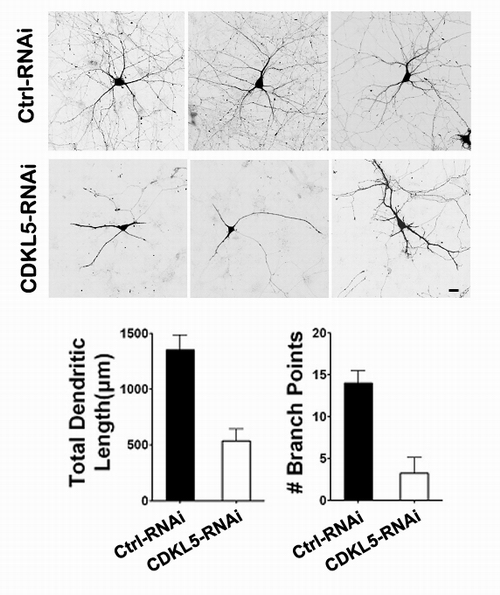Time:2010-09-27
On September 22, 2010, a research article from Dr. Zhi-Qi Xiong’s laboratory entitled “CDKL5, a protein associated with Rett syndrome, regulates neuronal morphogenesis via Rac1 signaling” was published in the Journal of Neuroscience. This work was carried out by graduate students Qian Chen and Yong-Chuan Zhu.
Mutations in cyclin-dependent kinase-like 5 (CDKL5), also known as serine/threonine kinase 9 (STK9), have been identified in patients with Rett syndrome (RTT) and X-linked infantile spasm. However, the function of CDKL5 in the brain remains unknown. Qian Chen and Yong-Chuan Zhu identified a neuron-specific splicing variant of CDKL5 whose expression was markedly induced during postnatal development of the rat brain. Downregulating CDKL5 by RNA interference (RNAi) in cultured cortical neurons inhibited neurite growth and dendritic arborization, whereas overexpressing CDKL5 had opposite effects. Furthermore, knocking down CDKL5 in the rat brain by in utero electroporation resulted in delayed neuronal migration, and severely impaired dendritic arborization. Overexpression of Rac1 prevented the inhibition of dendrite growth caused by CDKL5 knockdown, and the growth-promoting effect of ectopically expressed CDKL5 on dendrites was abolished by coexpressing a dominant-negative form of Rac1. Moreover, CDKL5 was required for brain-derived neurotrophic factor (BDNF)-induced activation of Rac1. In summary, these results demonstrate a critical role of CDKL5 in neuronal morphogenesis and identify a Rho GTPase signaling pathway which may contribute to CDKL5-related disorders.

Downregulation of CDKL5 by RNA interference inhibits dendrite development in cultured cortical neurons
This work was supported by the grants from the Chinese Academy of Sciences, the Ministry of Science and Technology and the National Natural Science Foundation of China.
 附件下载:
附件下载: